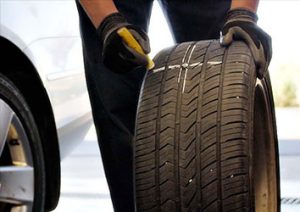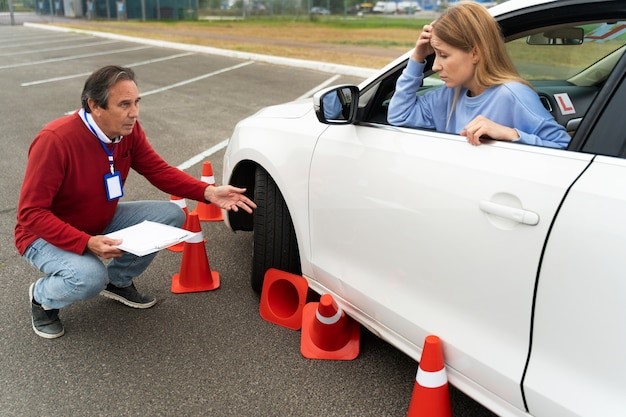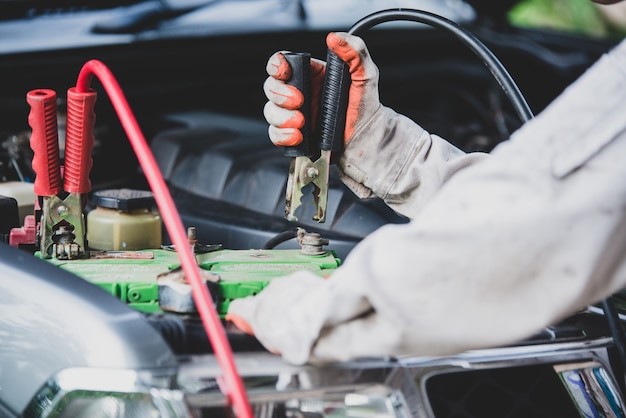How to Check Your Tire Pressure: A Step-by-Step Guide
Tire maintenance is a key aspect of car care that many drivers overlook, yet it plays a vital role in keeping your vehicle running smoothly. Regularly checking tire pressure is a simple task that can significantly improve your safety, fuel efficiency, and the longevity of your tires. Whether you’re driving in urban traffic or on long road trips, maintaining proper tire pressure ensures your car performs at its best.
Neglecting tire pressure can lead to issues such as poor fuel efficiency, uneven tire wear, and even dangerous blowouts. To avoid these problems, it’s important to check your tire pressure regularly. If you ever find yourself in need of tire assistance or other roadside services, All 4 One Transportation & Roadside Assistance is here to help. We offer 24/7 emergency services, including tire changes, jump-starts, and more, in Allenhurst, GA, and nearby areas. Reach out to us today for fast and reliable roadside assistance whenever you need it!
The Importance of Checking Tire Pressure
Before we dive into the process of checking your tire pressure, let’s talk about why it’s so important.
- Safety:
The primary reason to check your tire pressure is safety. Under-inflated or over-inflated tires can compromise your car’s performance, affecting handling, traction, and braking. Under-inflated tires, for instance, tend to heat up more quickly, which can lead to blowouts. On the other hand, over-inflated tires can cause a rough ride, reduce traction, and increase the risk of tire damage.
2. Fuel Efficiency:
Under-inflated tires create more resistance as they roll on the road, which can reduce your car’s fuel efficiency. Studies show that tires that are 10 psi below the recommended pressure can lower fuel efficiency by up to 3%. Therefore, maintaining the right tire pressure is an easy way to keep fuel costs down.
- Tire Longevity:
Maintaining the correct air pressure extends the life of your tires. When tires are under-inflated, the edges wear faster, while over-inflated tires wear out the center tread more quickly. Keeping your tires properly inflated ensures even wear and maximizes their lifespan.
- Optimal Performance:
Properly inflated tires improve handling, braking, and overall vehicle performance. Whether you’re driving in rainy weather, on highways, or in stop-and-go traffic, the right tire pressure provides better traction and handling, especially during turns or emergency stops.
How to Check Your Tire Pressure: A Step-by-Step Guide
Checking your tire pressure is simple and can be done at home with just a few tools. Here’s how to check your tire pressure accurately:
Step 1: Gather the Necessary Tools
To check your tire pressure, you’ll need:
Tire pressure gauge: A tire pressure gauge measures the air pressure in your tires. There are three types: dial, digital, and pen-style gauges. Each has its advantages, but the digital gauge tends to be the most accurate and easy to read.
Air compressor: If your tires are low on air, you’ll need an air compressor to inflate them. Most gas stations have air pumps, or you can buy a portable one.
Vehicle owner’s manual: The manual may provide the correct tire pressure specifications for your vehicle.

Step 2: Find the Recommended Tire Pressure
Every vehicle has a recommended tire pressure, which is usually measured in PSI (pounds per square inch). You can find this information in two places:
Driver’s side doorframe: Look for a sticker or metal placard located on the inside of your driver’s side doorframe. It lists the recommended tire pressure for your front and rear tires.
Owner’s manual: Your car’s owner’s manual will also specify the recommended tire pressure.
Tip: The recommended tire pressure may differ for front and rear tires, so be sure to check both.
Step 3: Prepare Your Vehicle
To get an accurate reading, your tires should be cool. Tire pressure can increase when the tires are hot from driving, which may give you an inaccurate reading. It’s best to check tire pressure after the car has been parked for at least three hours or when the tires are cold.
Step 4: Locate the Valve Stem on Each Tire
The valve stem is a small rubber or metal tube on the wheel where air is added or released. It’s usually located on the outer edge of the tire rim. You’ll need to remove the valve cap to check the tire pressure.
Step 5: Attach the Tire Pressure Gauge
Once the valve cap is removed, you’ll need to attach the tire pressure gauge to the valve stem. To do this:
Press the gauge onto the valve stem: The gauge should fit snugly and not allow air to escape.
Listen for a brief hiss of air: This is normal. It’s just the air escaping as you attach the gauge.
Wait a moment: Your gauge will provide a reading almost immediately. If using a dial or pen-type gauge, it will show the pressure on a scale. If using a digital gauge, the reading will appear on the screen.
Step 6: Check the Tire Pressure Reading
Read the tire pressure on your gauge. It should match the recommended PSI found in your vehicle’s manual or door placard.
If the tire pressure is too low, you’ll need to inflate the tire.
If the tire pressure is too high, you may need to release some air.
Step 7: Adjust the Tire Pressure if Necessary
If the tire pressure is too low or high, you’ll need to adjust it accordingly:
To inflate the tire:
Attach an air compressor to the valve stem and inflate the tire to the recommended pressure. Most gas stations provide air compressors, or you can purchase a portable one to keep in your car. When using an air compressor, periodically check the tire pressure to avoid over-inflation.
To deflate the tire:
If the tire is over-inflated, press the small pin inside the valve stem with your gauge or another tool to release air until the pressure reaches the desired level. Be sure to check the pressure again once you’ve released some air.
Step 8: Replace the Valve Cap
Once you’ve set the tire to the correct pressure, screw the valve cap back on. The valve cap helps keep dirt and moisture out of the valve stem, which can affect tire pressure.
Step 9: Repeat for All Tires
Check all four tires, including the spare if your car has one. Tires may lose or gain pressure at different rates, so it’s essential to check each tire individually. Don’t forget to check both the front and rear tires, as they may have different pressure requirements.

How Often Should You Check Your Tire Pressure?
You should check your tire pressure at least once a month and before long trips. Tires naturally lose air over time, and various factors—such as temperature changes—can cause fluctuations in pressure. It’s also essential to check tire pressure when:
Do you notice any changes in handling or steering performance?
Your tires appear visibly low or flat.
The weather changes drastically (extreme heat or cold can affect tire pressure).
Conclusion: Why Tire Pressure Matters
In conclusion, knowing how to check your tire pressure is a vital skill for every vehicle owner. It’s a simple and quick task that can save you from expensive repairs, increase your fuel efficiency, and keep you safe on the road. With a little effort and the right tools, you can ensure your tires are properly inflated and your vehicle is running at its best.
By following this guide, you’ll be able to check and maintain your tire pressure with ease. So, grab your tire pressure gauge, check your tires regularly, and enjoy a smoother, safer, and more efficient ride.
Need Roadside Assistance? All 4 One Transportation is Here to Help!
While maintaining your tire pressure is crucial, unexpected roadside situations can still happen. If you’re ever in need of a tire change, emergency fuel delivery, or a jumpstart, All 4 One Transportation & Roadside Assistance is ready to assist you! Serving Allenhurst, GA, and surrounding areas, we offer 24/7 roadside assistance, including:
- Fuel delivery
- Battery jumpstart
- Lockout services
- Tire changes and more!
Don’t let tire trouble or other road emergencies derail your day. Call Now All 4 One Transportation today and experience fast, reliable service wherever you are. We’re here to keep you safe on the road!




